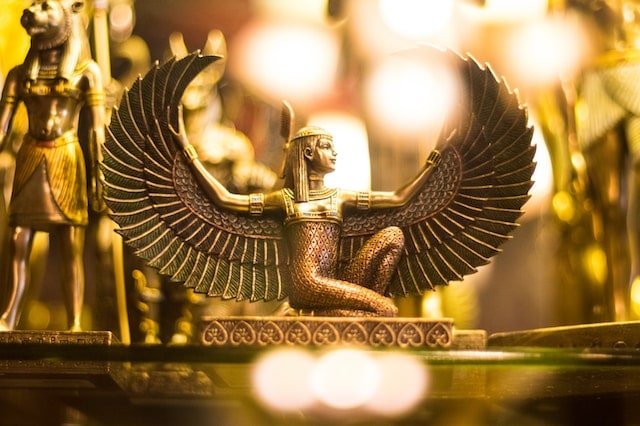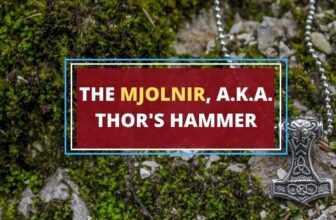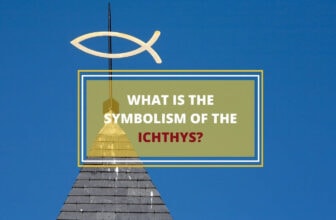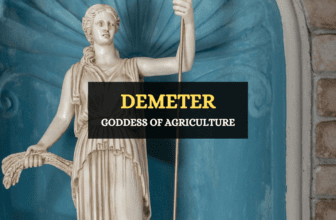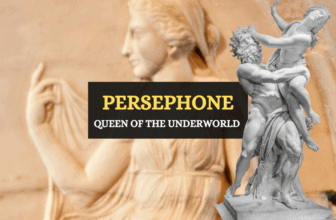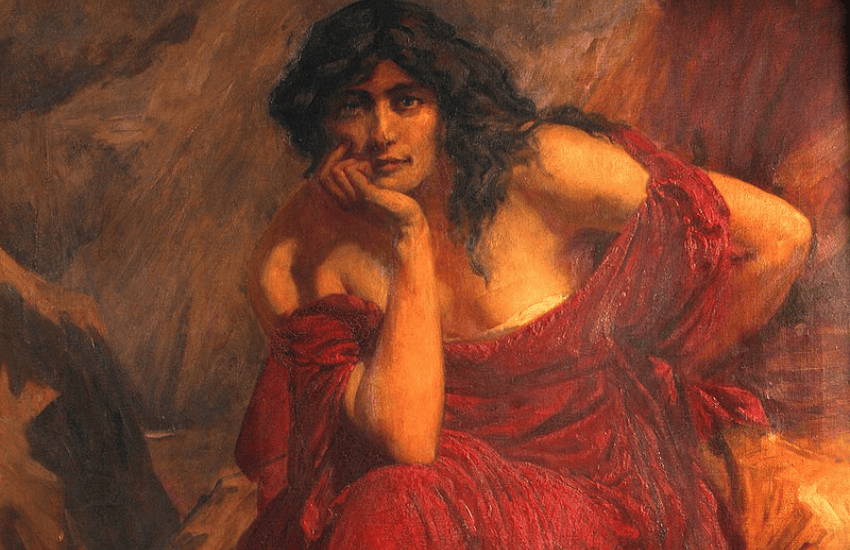
Table of Contents
Cerridwen is a powerful enchantress with incredible magical talents in Welsh mythology. She possessed the gifts of Awen, poetic wisdom, inspiration, and prophesy. Cerridwen is frequently depicted as a witch or an enchantress, and her tale is an important part of Welsh literature. She is often associated with transformation, wisdom, rebirth, and the cauldron of inspiration.
Who is Cerridwen?
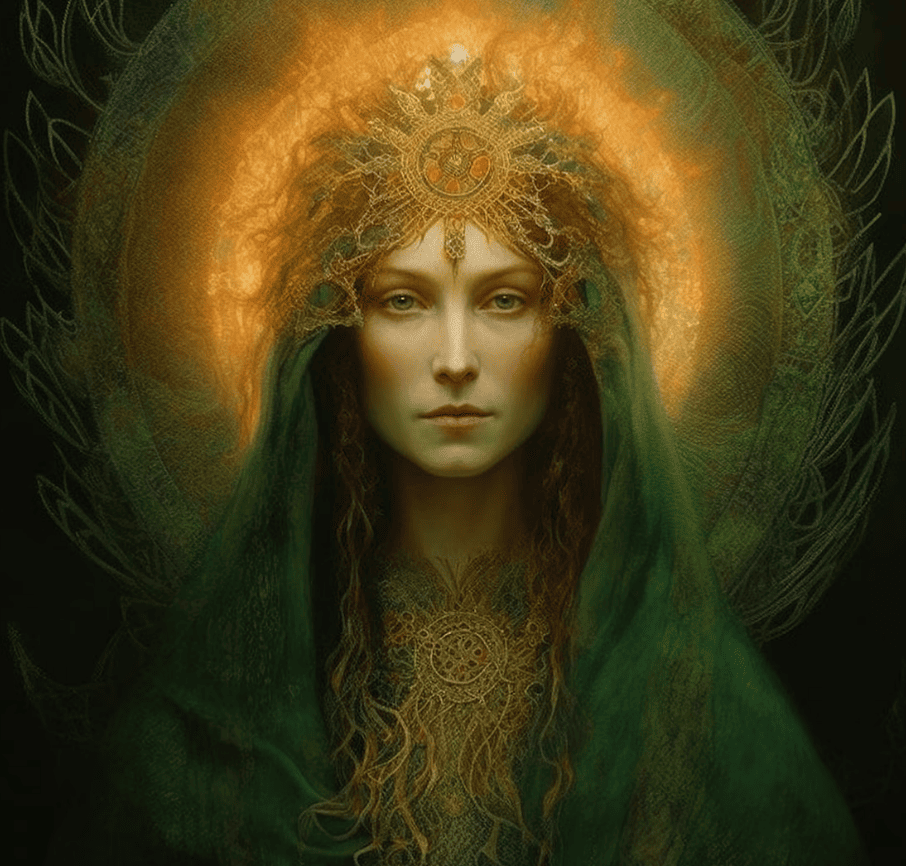
Cerridwen, also spelled Ceridwen and Kerrydwen, is a name with Welsh origins. It stems from the words Cerid, meaning poetry or song, and the word Wen, which can be translated as fair, white, or blessed.
In Celtic mythology, Cerridwen was the most powerful sorceress, or a white witch. According to the Welsh lore, she was a wise mother, blessed with the skills of Awen, a collective name for poetic wisdom, prophecy, and inspiration. She is the keeper of the magical cauldron, where she makes potions to help other people and draw Awen’s blessings.
Besides the gifts of wisdom and knowledge, her potions give other magical effects, including making possible shape-shifting and changing of appearance. The potions are also quite potent; one drop of the potion is enough to kill. Since Cerridwen only deals with white magic and wishes no evil, she’s cautious with her potions. Sometimes she uses them to help those closest to her, such as her son Morfran.
Cerridwen is known by many names, such as the White Crafty One, the White Sow, Great Mother, the Dark Moon Goddess, the Goddess of Inspiration and Death, the Grain Goddess, and the Goddess of Nature. She’s seen as the sovereign goddess of creation, ruling the realms of inspiration, magic, death, regeneration, fertility, and knowledge.
Cerridwen and Bran
As the powerful Goddess of the Underworld and the keeper of the cauldron of wisdom, Cerridwen first appeared in the legend of Bran the Blessed, the giant king. According to the Welsh myth, together with her husband and her cauldron, Cerridwen arrived in the Land of the Mighty disguised as giants.
Emerging from a lake, they terrified the Irish people, who believed that a lake signified the Otherworld. As the people feared the death they represented, Cerridwen and her husband were violently banished from Ireland. Bran the Blessed offered them safety and shelter in his land, but he wanted the magical cauldron in return.
As the cauldron was the vessel for resurrecting the dead, the giant king wanted to use it to bring his dead warriors back to life. Later at his sister Branwen’s wedding, Bran gifted the cauldron to her husband Matholuch, the Irish king. The legend goes on to say that eventually, both tribes perished due to the misuse of this cauldron.
Cerridwen’s Family and Popular Myths
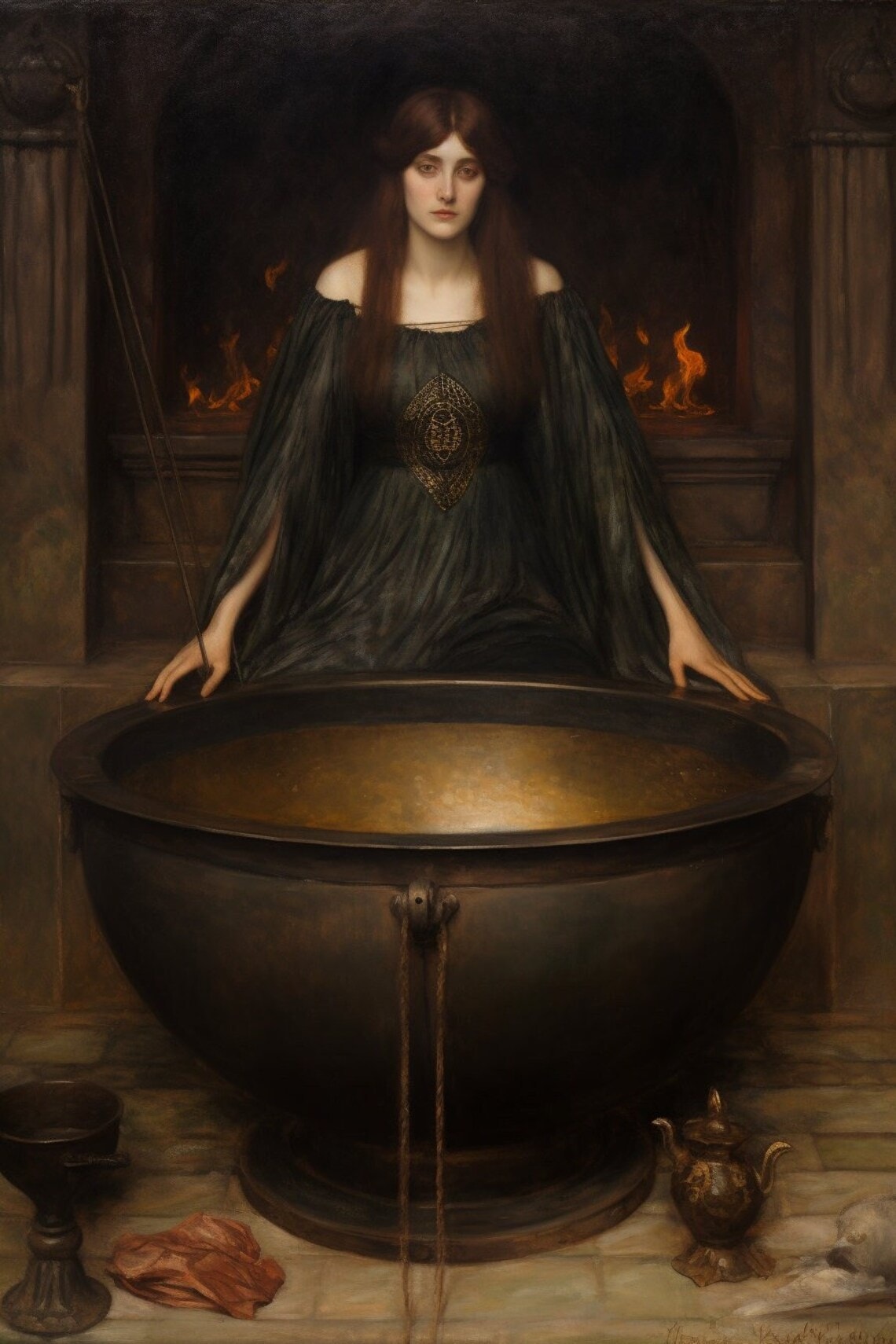
The White Goddess of Inspiration and Death was married to Tegid Foel, and they lived near Bala Lake in North Wales. They had twins, a girl and a boy. The daughter, Creirwy, was bright and beautiful, but the son, Morfran Afaggdu, had a warped mind and was physically deformed.
A Potion for her Son
Cerridwen loved both of her children equally, but she feared her poor son wouldn’t have a good life due to his shortcomings. Hence, the powerful sorceress set out to make a magical potion in her cauldron to grant her son beauty and wisdom. Once she prepared all the ingredients, she ordered a blind man called Morda to feed the fire and a servant boy named Gwion Bach to stir the concoction.
For the brew to be effective, the contents needed to be boiled for exactly one year and one day. After this period, only three drops of the potion were required to transform the drinker into a wise man; the rest would be poisonous. On the last day, while stirring the pot, the little Gwion Bach accidentally splashed the liquid on his thumb. He instinctively put the finger in his mouth to ease the pain, ingesting the three magical drops.
Chasing Gwion Bach
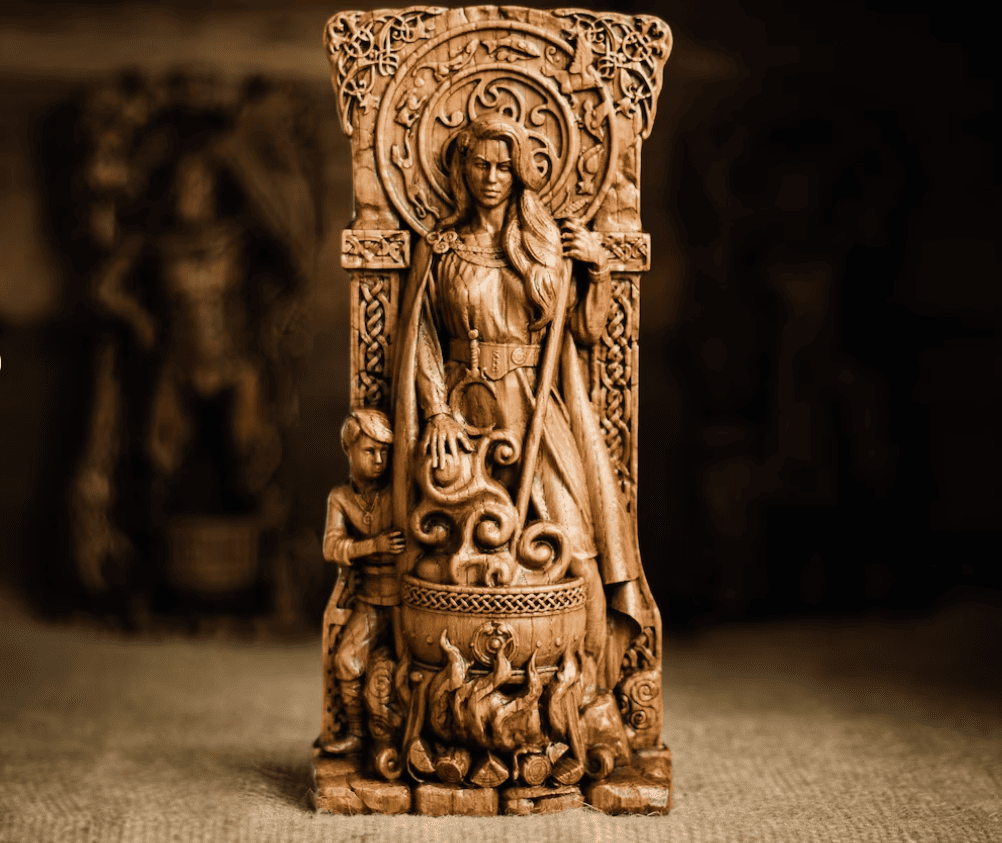
Gwion Bach was instantly overcome with immense beauty and immeasurable knowledge and wisdom. Knowing that Cerridwen would be enraged by this turn of events, he became frightened and fled. Cerridwen realized what he had done and started chasing him. With newly acquired powers, the boy turned himself into a hare to try and outrun her. In turn, the goddess shape-shifted into a greyhound and quickly started to gain on him.
With this, the epic chase had begun.
Gwion then turned into a fish and jumped into a river. The chase continued because Cerridwen transformed into an otter and dove into the water right behind him. Gwion shifted into a bird and started to fly away. Cerridwen was still in pursuit as she turned into a hawk. She finally managed to grab him, but Gwion then turned into a single grain of wheat and fell from her grasp. Turning herself into a hen, she found the grain and ate it.
A Strange Pregnancy
However, Gwion was still alive, taking seed in Cerridwen’s womb and making her pregnant. Knowing that it was Gwion in her womb, she resolved to kill the child upon his birth. However, after giving birth to a beautiful baby boy, she couldn’t bring herself to do what she had intended.
Instead, she cast him into the sea, leaving his fate to the sea and the winds. The child was found on the shore by the prince Elffin and his wife, who decided to adopt him. The baby grew to become the greatest poet in Wales and the kings’ advisor. His name was Taliesin.
Cerridwen’s Symbolism and Significance
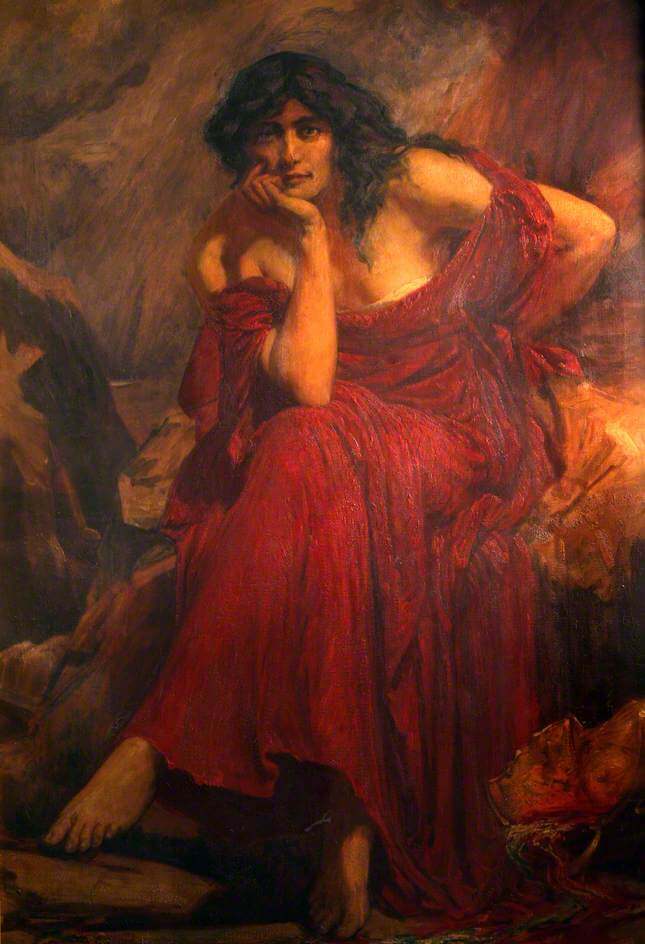
Cerridwen’s ritual pursuit of Gwion and transformation into different animals and plants serve as an inspiration for various symbolic interpretations. This story, full of shape-shifting and heavy instances of adapting and transforming into whatever the situation requires, is symbolic of nature’s eternal cycle of death and rebirth as well as the changing of the seasons.
The goddess is often depicted and associated with the magical cauldron of knowledge as well as different animals, plants, and natural objects. Each of these elements holds a certain symbolic significance:
1. Cauldron
Just as the goddess herself, the cauldron also symbolizes the womb’s manifestation, the source of all life in this world. It also represents the power of transformation, magic, wisdom, and creative inspiration. As the goddess is continually tending to her cauldron, preparing and stirring the forces of divine wisdom and knowledge as well as the endless circle of birth, death, and rebirth, she’s seen as the wheel of life.
2. Dark Moon
Cerridwen is commonly associated with the dark moon. In one lunar cycle, the moon undergoes different phases and expressions. This characteristic is connected to the goddess’s shape-shifting and transformation abilities.
One of those phases is the dark moon, also known as Black Moon or Lilith Moon. It signals the new moon and the start of the new lunar cycle, symbolizing new beginnings, intuition, rebirth, and spiritual connection.
3. Cerridwen’s Sacred Animals
When addressing her people, the goddess often takes a form of a white sow. The white sow represents her motherly nature as well as fertility and creative force. In her story, she shape-shifted into the otter and greyhound, symbolizing compassion, inspiration, and curiosity.
4. Cerridwen’s Sacred Birds
The goddess is often associated with hawks, hens, and craws, and in her legends, she even transforms into these birds. These birds are considered the messengers of the spiritual world, symbolizing the higher vision and the ability to use intuition as well as transformation and change.
5. Cerridwen’s Sacred Plants or Offerings
Cerridwen is sometimes referred to as the Grain Goddess. Grain or wheat symbolizes abundance, fertility, life, and nurturing.
6. The Crone
Due to her close connection to the full moon, modern Pagans revere the goddess as both the Crone and the Mother. Thanks to her wisdom, Cerridwen has earned her status as the Crone, equating her with the Triple Goddess‘s darker aspect. The Crone is seen as the wise one, symbolizing innerknowledge, intuition, guidance through different aspects of life, and transformation.
Lessons from Cerridwen’s Stories
Cerridwen’s tales explore the ideas of the importance of change and teach us some valuable lessons:
- Find growth through transformation: Young Gwion flees through many stages as his newly enchanted self. In these transformations, he becomes a creature of the Earth, sea, and sky. He goes through a full life cycle to be consumed and then reborn. It’s a lesson to find growth and inspiration through transformation.
- Don’t fear change: The cycle of life isn’t literal – birth, death, and rebirth. But instead, it refers to the death of different chapters of our lives. Cerridwen’s story examines the need for transformation, which is imminent. We need to recognize when certain circumstances in our lives no longer serve us and that something must die for something else to be born. We shouldn’t fear change but accept it and learn to shape-shift and adapt to any given situation.
- With enough effort, we can achieve anything: The goddess never gave up, and she went through multiple transformations until she got what she wanted. Driven by the fierce commitment to her child, her despair, and her wrath, she managed to eventually catch the young Gwion. She’s showing us that we can achieve our ultimate goals by using relentless focus and energy.
- We already have all the answers we seek: Awen is the ebb and flow of all existence, and the cauldron containing it represents a womb. We swim within it, and once we’re born, we feel that through life, we’ve lost that connection. It feels as though it’s something to be obtained and searched for. But we find that it’s already in every one of us. We can take the tales of history and our ancestors to guide us back to it. We already contain all the love and answers to life we’ll ever need.
Cerridwen’s Worship Today
Although the worship of Celtic deities declined with the advent of Christianity, there’s been a resurgence in recent years. Cerridwen is widely worshipped, especially within certain neo-pagan and Wiccan communities. Her role as a powerful enchantress and her association with wisdom, transformation, and rebirth has led many modern practitioners to revere her as a deity.
In Brief
Cerridwen is the Goddess, the Mother, an enchantress, and an herbalist. She’s known as a witch and a shapeshifter, representing wisdom, rebirth, inspiration, and transformation. Her tales inspire us to cultivate compassion, love, and inner harmony and teach us the importance of change and finding the essential self.
Related Articles:
Rhiannon – The Welsh Horse Goddess
Most Popular Celtic Gods and Goddesses with Their Power
Macha: Celtic Goddess of Power, Fertility, and War
Danu: The Mother Goddess at the Heart of Celtic Mythology
Andraste – The Celtic Warrior Goddess
